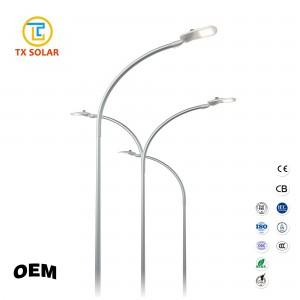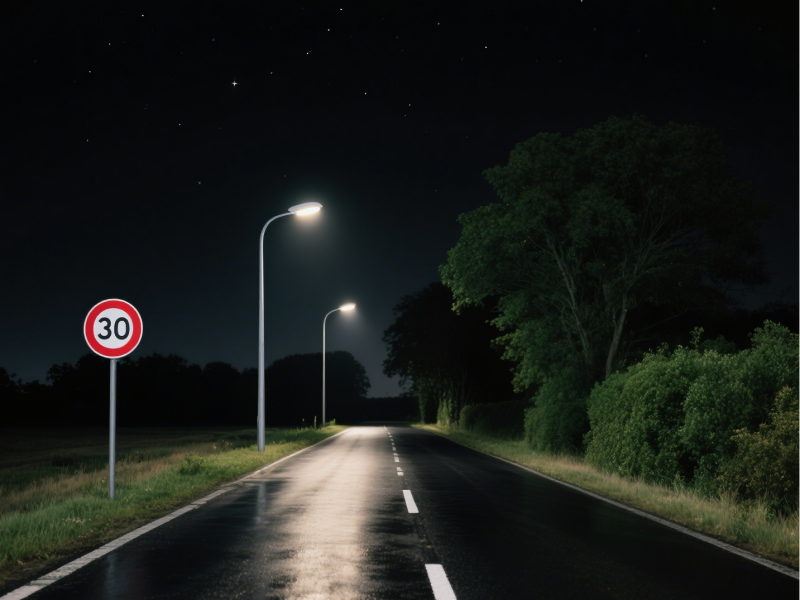For streetlight projects, including those for urban main roads, industrial parks, townships, and overpasses, how should contractors, businesses, and property owners choose streetlight wattage? And what’s the typical wattage of road LED street lamps?
LED street lamp wattage typically ranges from 20W to 300W; however, typical road LED street lamps are often lower wattage, such as 20W, 30W, 50W, and 80W.
Normal streetlights are 250W metal halide lamps, while high-power road LED street lamps are typically less than 250W. As the name suggests, high-power LED street lamps have a single diode power of more than 1W and utilize new LED semiconductor light sources. Current standards for LED street lamps generally require an average illumination of 0.48 for road surface illumination uniformity, exceeding the traditional national standard of 0.42, and a spot ratio of 1:2, meeting road illumination standards. Currently, streetlight lenses on the market are made of improved optical materials with a transmittance of ≥93%, temperature resistance of -38°C to +90°C, and UV resistance with no yellowing for 30,000 hours. They have excellent application prospects in new urban lighting applications. They offer deep dimming, and their color and other characteristics remain unchanged due to dimming.
 How to choose the power of an LED street lamp?
How to choose the power of an LED street lamp?
When you purchase LED street lamps from Tianxiang, a street lamp supplier, professional technicians will design a streetlight retrofit plan for you. Tianxiang’s technicians and sales representatives have extensive experience in streetlight engineering applications.
The following method is for reference only:
1. Test Area
The test road is 15 meters wide, the streetlight is 10 meters high, and the angle of elevation is 10 degrees per meter above the arm. The streetlight is tested on one side. The test area is 15m x 30m. Because narrow roads do not require high lateral light distribution from streetlights, data for a 12m x 30m application area is also provided for reference on roads of different widths.
2. Test Data
The data is the average of three measurements. Luminous decay is calculated based on the first and third measurements. The time span is 100 days, with the lights turned on and off normally every day.
3. Evaluation using luminous flux, luminous efficacy, and illumination uniformity
Luminous efficiency is calculated as luminous flux divided by input power.
Luminous flux is calculated as average illuminance x area.
Illumination uniformity is the ratio of the minimum to maximum illuminance at a measured point across the road.
In streetlight applications, the appropriate wattage of streetlights should be determined based on the manufacturer’s streetlight performance. For the same road, a 100W road LED street lamp from Manufacturer A may provide adequate lighting, while a streetlight from Manufacturer B may only require 80W or even less.
Tianxiang LED street lamps adhere to stringent quality control standards, striving for precision and accuracy from the selection of core components to the control of every production process. Before leaving the factory, each lamp undergoes multiple rounds of rigorous testing to ensure that it meets high standards in terms of optical performance, structural stability, weather resistance, etc., just to ensure that every lighting is stable and reliable, providing long-term and high-quality protection for road lighting.
Post time: Aug-14-2025





